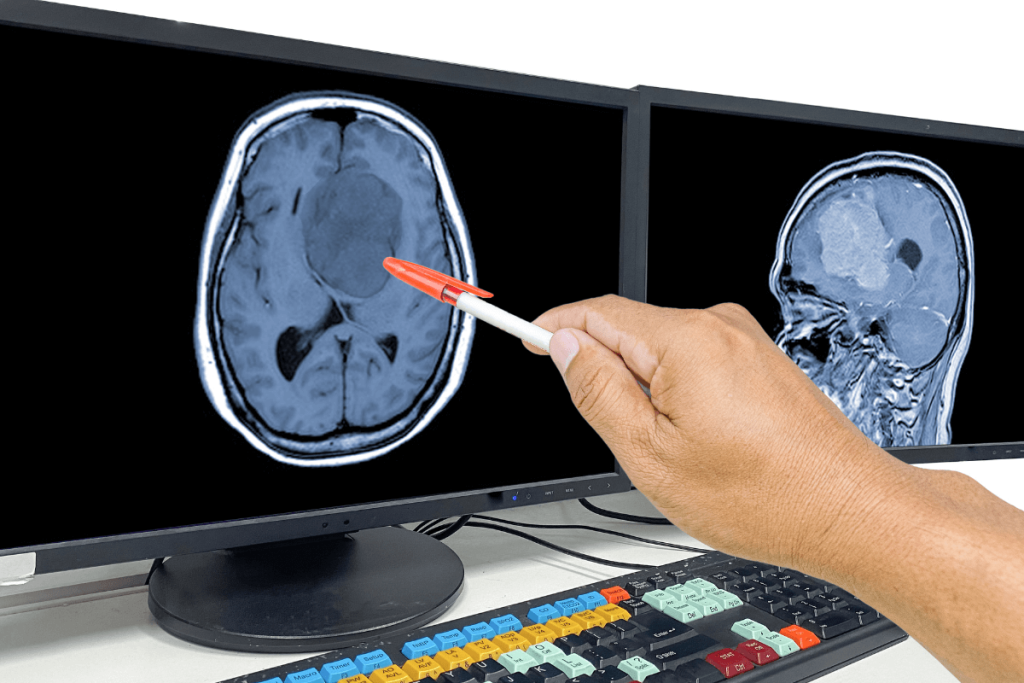
The glucose carbons in the human brain are responsible for important physiological functions such as neurotransmitter production and tricarboxylic acid (TCA) cycle oxidation. Gliomas, however, disrupt these processes by suppressing glucose metabolism and recycling alternative carbon sources to generate metabolites that support invasion and proliferation. The most common type of malignant brain tumors is gliomas, which develop from aggressive glial cells.
Treatment resistance and the range of tumor heterogeneity, which limit therapeutic efficacy, are considered the main causes of poor clinical outcomes. Downstream metabolites were traced from substrates labelled with heavy isotopes to investigate the differential metabolism of nutrients. The applications of technology in human brain cancer are limited, as available evidence suggests that the active TCA cycle depends mainly on acetate and glucose. The dietary modulation of alternative carbon sources may therefore increase the effectiveness of chemoradiation by supporting the formation of biomass.
Using mass spectrometry (MS), researchers identified the downstream metabolic pathways of 13C-glucose in various tumor areas and the surrounding brain. This research included a total of eight patients: six were diagnosed with glioblastoma (GBM), one was diagnosed with a histone H3-G34R mutant grade 4 glioma, and one with an IDH-mutant anaplastic oligodendroglioma. Human tissue samples were separated by hematoxylin and eosin (H&E) staining, with non-enhancing samples containing approximately 80% of the tumor and mixed content.
Magnetic resonance spectroscopy revealed that the levels of N-acetyl aspartate in the human brain were 2 to 50 times greater than those in enhancing tumors. After 30 minutes, arterial glucose levels stabilized, which ranged from 20% to 40% of total arterial glucose throughout the surgery. Purine nucleotides were maintained either by conjugation of a pre-existing nucleobase with ribose or through de novo synthesis.
In single-timepoint investigations, the nucleotide profiles displayed increased tendencies throughout the experiment to indicate isotopic steady state during the time of collection. The static metabolite levels cannot determine the overall level of purines. The brain synthesizes serine from glucose, as indicated by the majority of m+1 serine in gliomas and m+3 serine in the cortex. The high serine absorption was confirmed in all three tumor models, as they absorbed more m+3 serine from plasma than the cortex.
Due to limited endogenous serine production, GBMs depend on extracellular serine, which addresses the therapeutic potential of dietary serine restriction. Labeling studies showed that GBM glucose-derived nucleotides were reduced, indicating decreased reliance on glycolytic pathways. Researchers used the numerical scoring method for all studies to give points based on their appearance, behaviour, and physical characteristics. The supernatants containing soluble metabolites were dried by nitrogen purging or the vacuum centrifugation method after the insoluble material was precipitated at 4 °C.
The Kaplan-Meier technique was used to calculate overall survival, while survival curves were compared using the log-rank test. In this study, GraphPad Prism 10 or R version 4.4.2 was used for the analysis purposes. The results highlighted how aggressive brain tumors exploit glucose metabolism to inhibit healthy physiological functions and promote malignant growth. Therefore, this will help to identify patients who would benefit most from metabolic-targeted therapies.
Reference: Scott AJ, Mittal A, Meghdadi B, et al. Rewiring of cortical glucose metabolism fuels human brain cancer growth. Nature. 2025. doi:10.1038/s41586-025-09460-7











